Strolling the aisles of your native Goodwill, you would possibly pause at a shelf piled with previous porcelain plates embellished with flowers, vines, and bucolic surroundings. These inexpensive dishes—often called transferware—had been invented for the rising center class in 18th-century England. Impressed by hand-painted Chinese language porcelain however stamped by machine, then exported by the shipload, English transferware turned the go-to dish for early American households.
Transferware’s earthenware base materials (generally substituted for ironstone, porcelain, or bone china) stored the dishes extremely inexpensive, however their printed-on monochrome designs—that includes castles, courting {couples}, and different intricate scenes—seemed something however. The approach lives on at this time, each in dear, collectible Limoges porcelain from France, in addition to in lower-grade plastic servingware that’s instantly in vogue.
Throughout the USA, well-known cooks at the moment are reviving transferware, swapping minimalist white dishes for Southern Willow Blue, English Chippendale, Historic American Brown, and different classic designs. There’s a consolation to those previous dishes, which conjure up meals in grandparents’ properties. Today, removed from feeling formal or stuffy, the quaint motifs encourage a extra relaxed eating expertise. Listed below are the eating places on the forefront of the transferware renaissance. What’s previous is new once more.

Earlier than opening this groovy uncooked bar, chef-owner Benjamin Sukle (of Oberlin restaurant fame) dove into Sixties, ’70s, and ’80s dinnerware designs to match the brand new restaurant’s “timeless, brash type.” Rosebud Chintz from Spode was a winner, and eBay and Etsy acquired the job carried out. “Each time I’ve an empty plate in entrance of me, I can’t assist however flip it over to see who made it, what assortment it’s from, and the way previous it’s,” says Sulke, a self-proclaimed “lifelong plate flipper.”
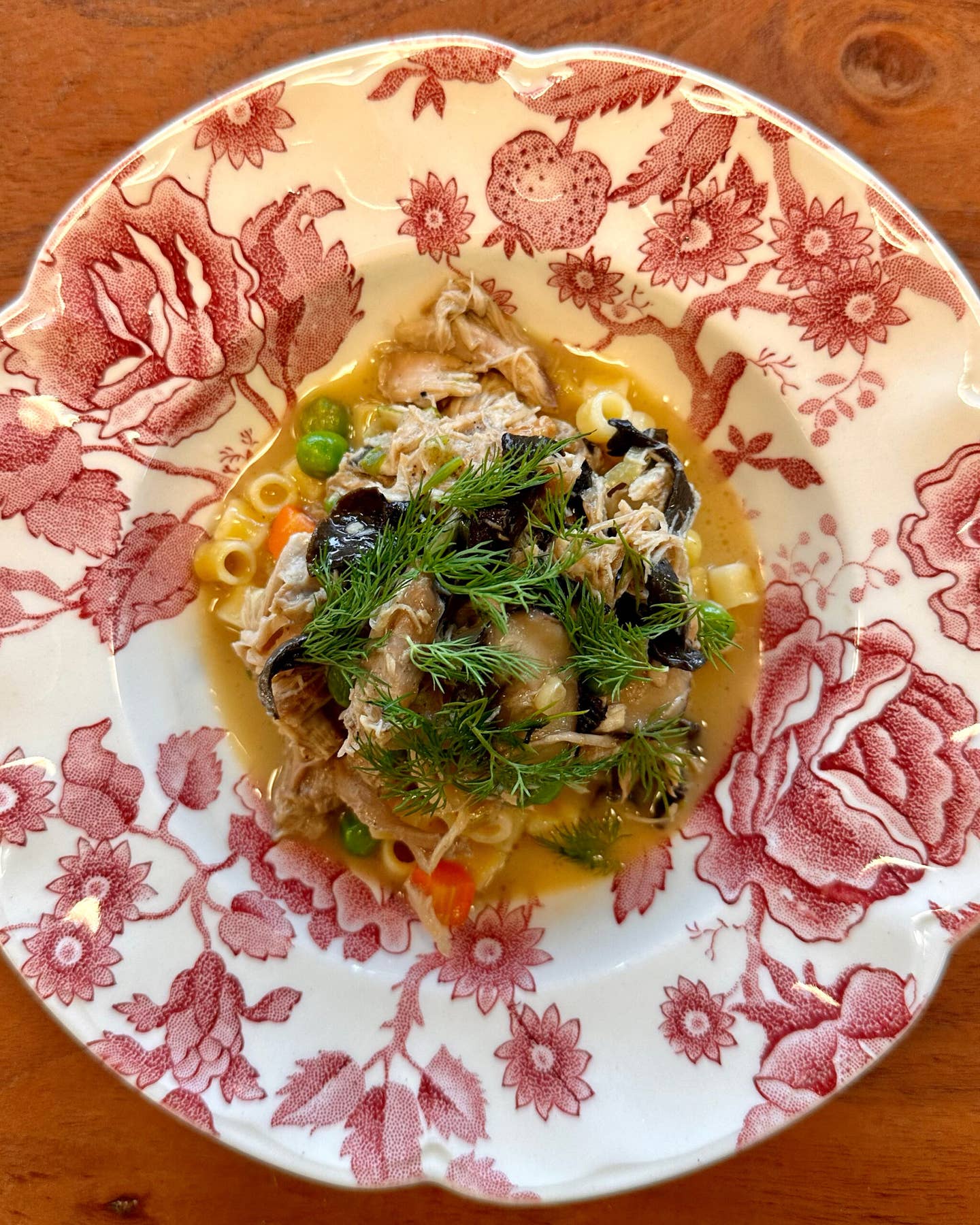
Ethan Lim’s trendy Cambodian restaurant (named after its neighborhood) pays homage to his late mom, Momma Lim, who ran a noodle stand in pre-war Battambang. With the COVID-19 pandemic within the rearview, Lim “needed to concentrate on creating an area the place time stood nonetheless and the service type was reflective of being at residence,” a philosophy that shines by way of in such touches as his associate’s grandmother’s English Chippendale plates—on which he serves Dungeness crab and caviar.
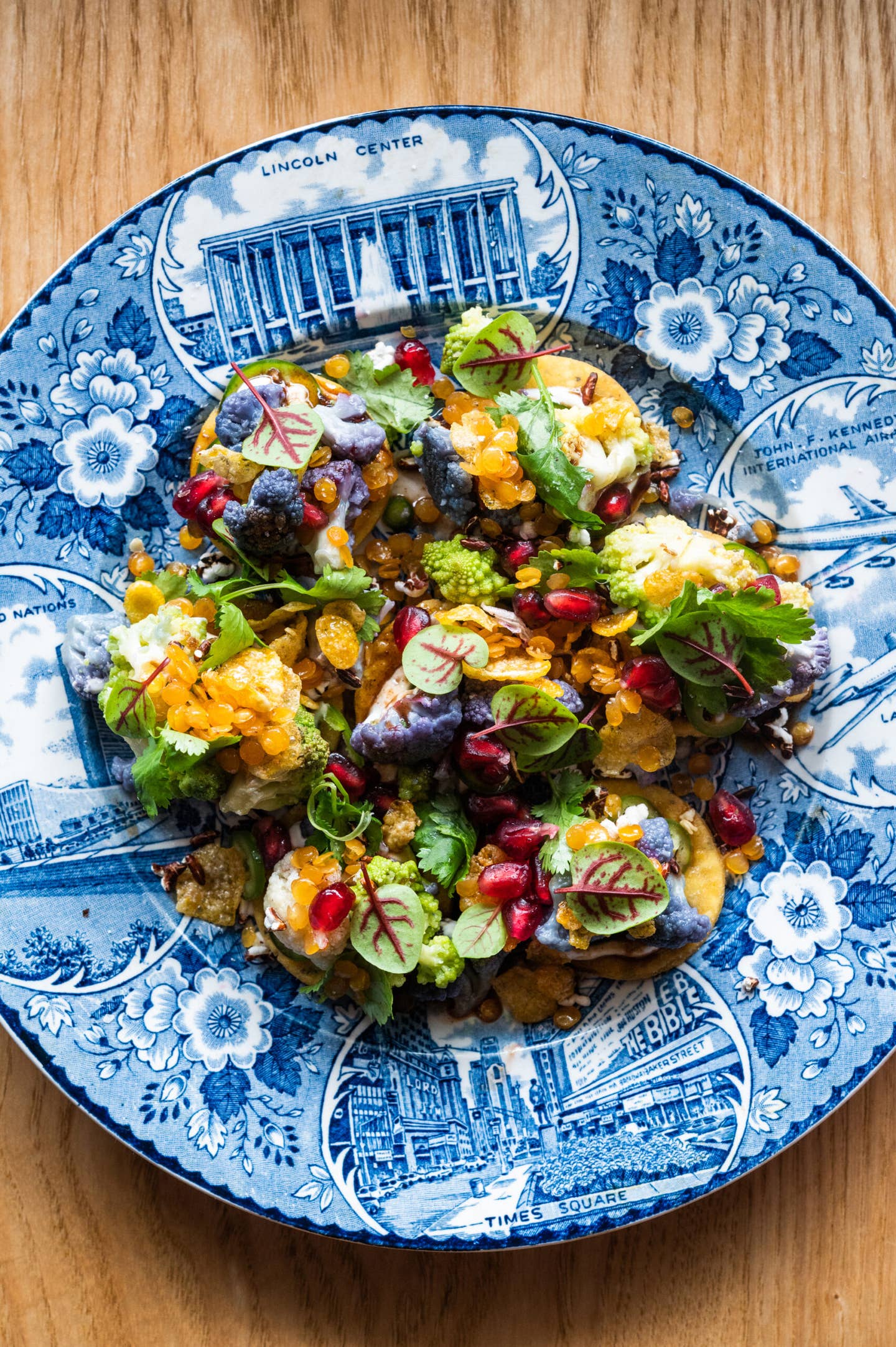
At her maximalist “tropical roadhouse,” chef-owner Sophina Uong swaps starched tablecloths and matching plates for a hodgepodge of colourful transferware. “I do know it drives our cooks and servers loopy, as a result of nothing matches and issues are not possible to stack collectively neatly, however to me, that’s the fantastic thing about recycling items of historical past,” she says. Menu standouts embody avocado chaat and turmeric-potato pani puri.

Housed in a defunct nook retailer, James London’s dock-to-table restaurant sprinkles in deep blue transferware to enhance the informal, nautical really feel. “We attempt to not take ourselves too critically,” says London, referring to dishes that includes tuna stomach toast and caviar sandwiches served on mismatched china. “Friends get excited after they see plates or glasses they grew up with, and infrequently convey us bins of plates from their storage that they assume will work with our lineup,” he says.
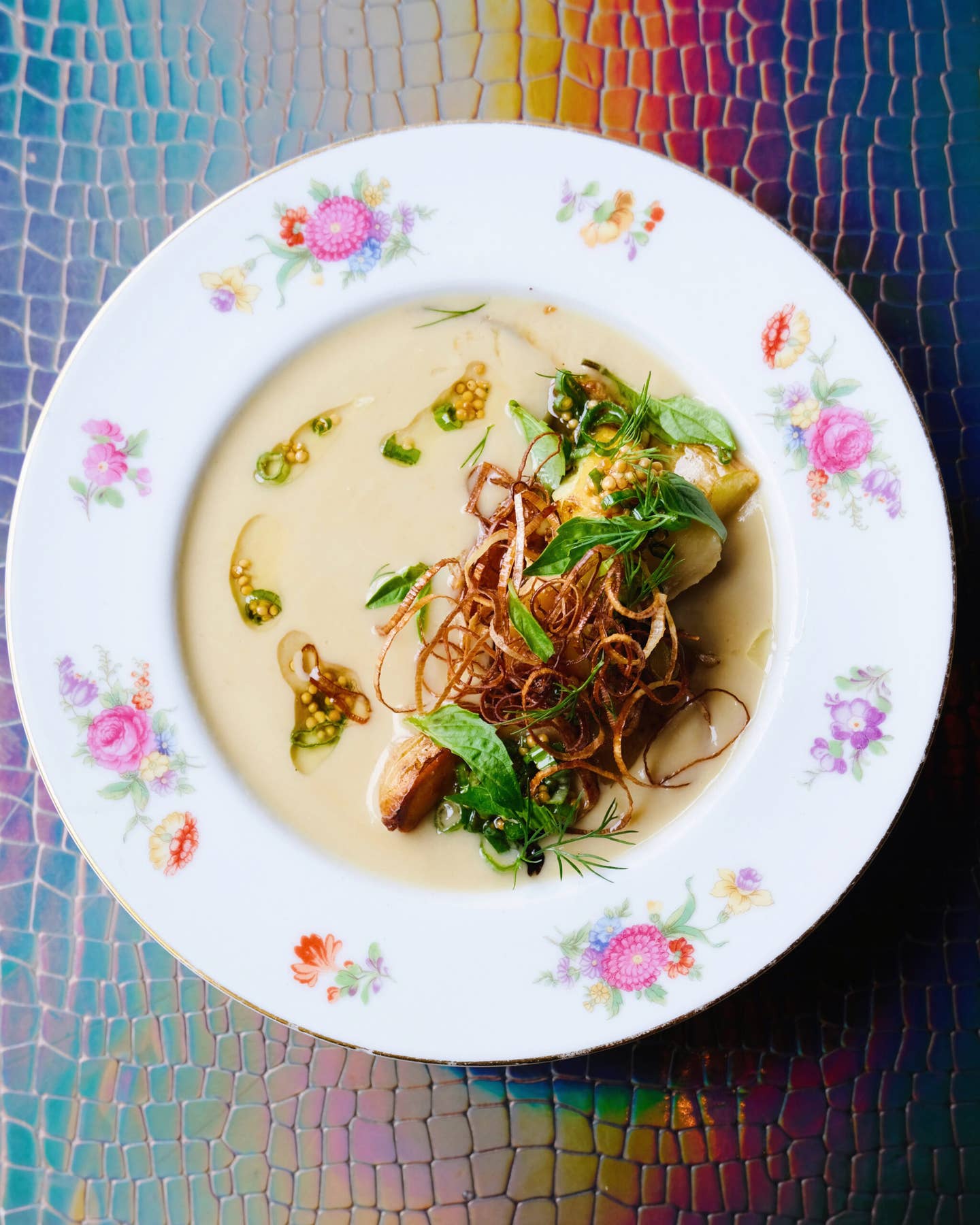
Boulangerie by day, bistro by night time, Troubadour Bread & Bistro’s whimsical aesthetic shines by way of within the escargot and tartiflette served on gold-rimmed Limoges, a transferware subset standard in Nineteenth-century France. “I like that every piece has a narrative, and that we get to present these plates a correct stage,” says co-owner Sean McGaughey.
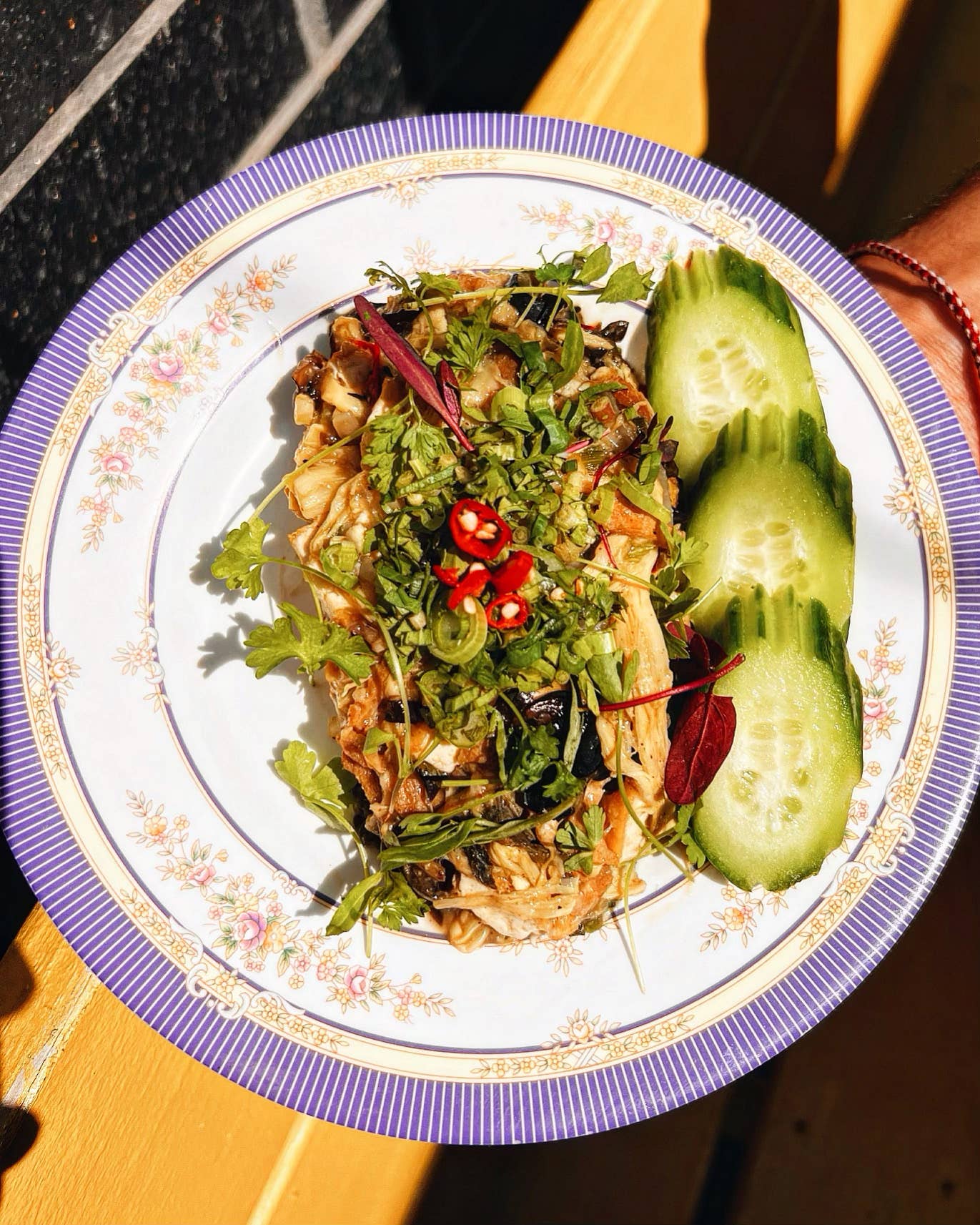
The shatterproof melamine dishes at this brother-and-sister-owned Lao restaurant are a nod to the duo’s childhood. “I need patrons to really feel like they’re at my mother’s home,” says co-owner Jeff Chanchaleune, who serves mugifuji pork katsu and nam khao on the identical plastic, floral-rimmed plates he ate from rising up.
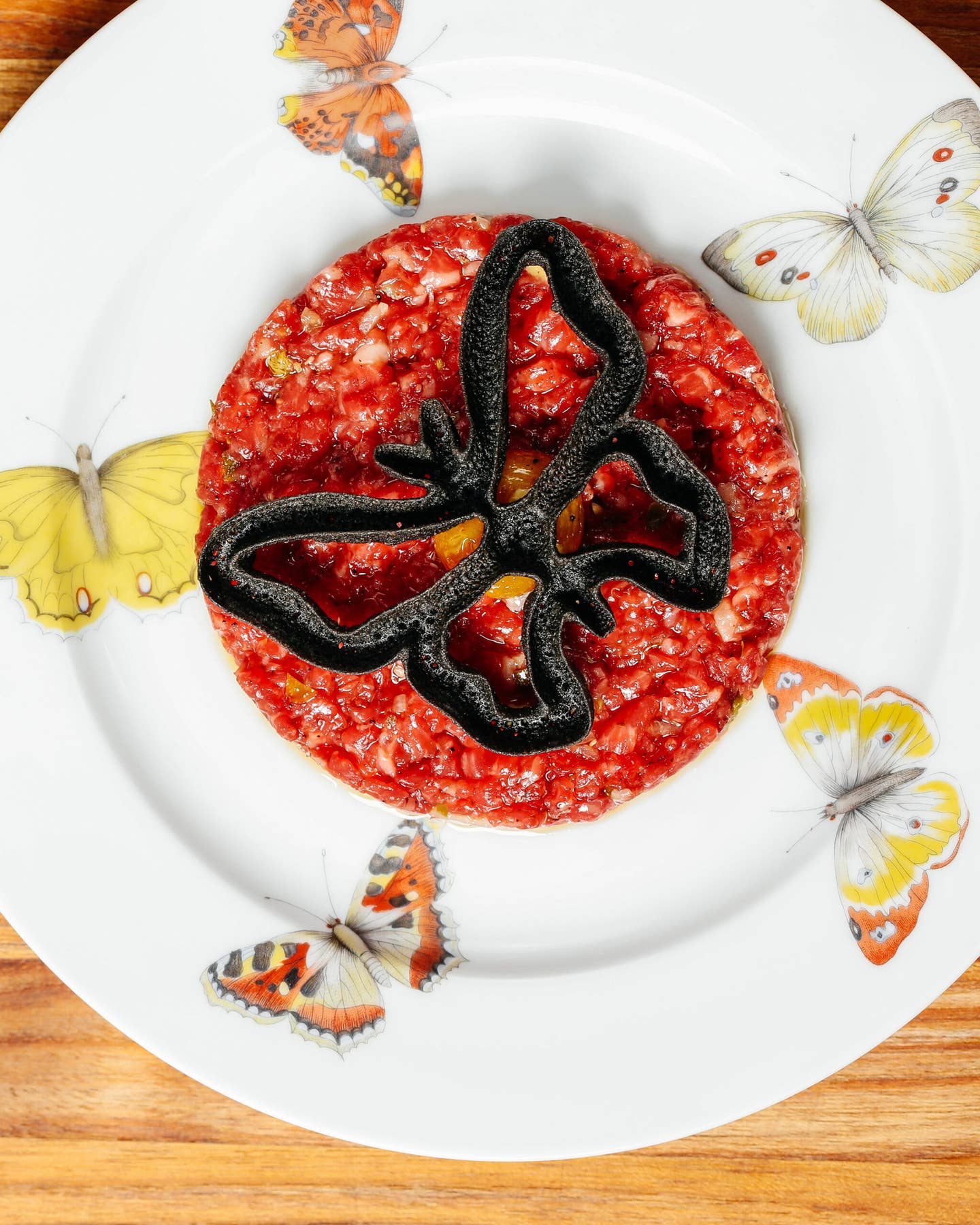
To create a restaurant that existed “outdoors the space-time continuum,” the co-owners of this Singapore and Malaysian hawker-inspired eatery leaned into daring, clashing patterns and ornate particulars corresponding to lustrous materials, thrifted floral transferware, and a ’70s-esque iridescent snakeskin bar high.

